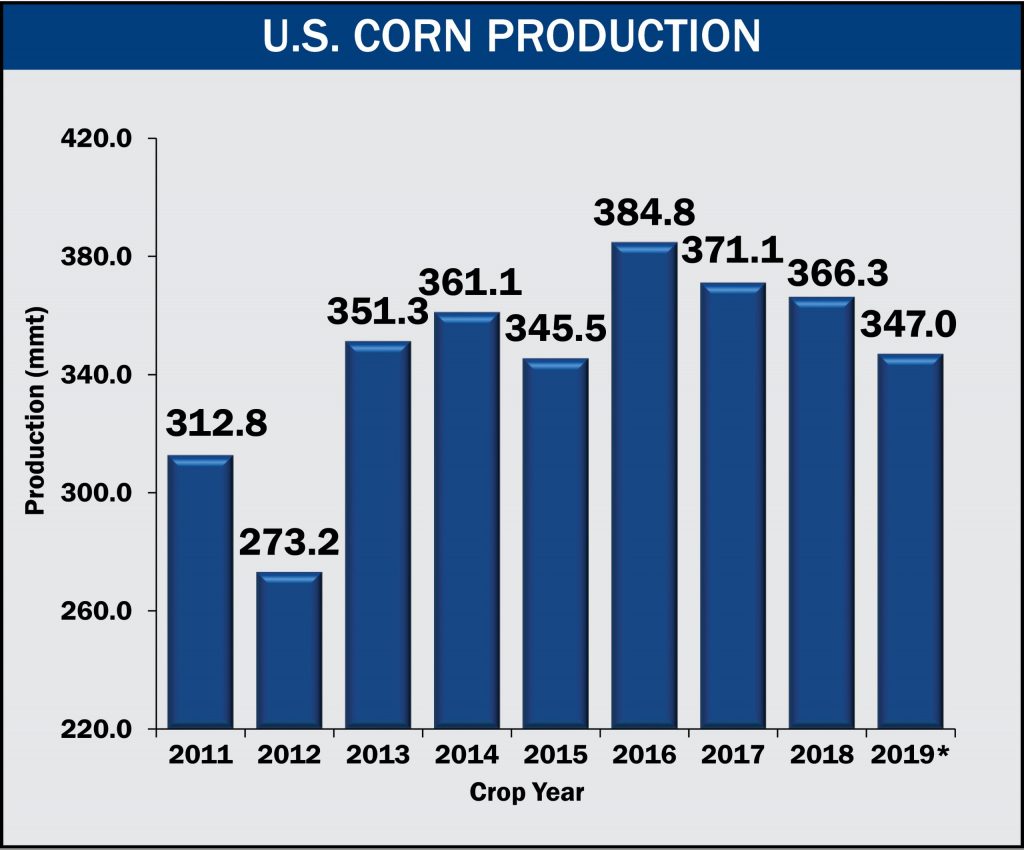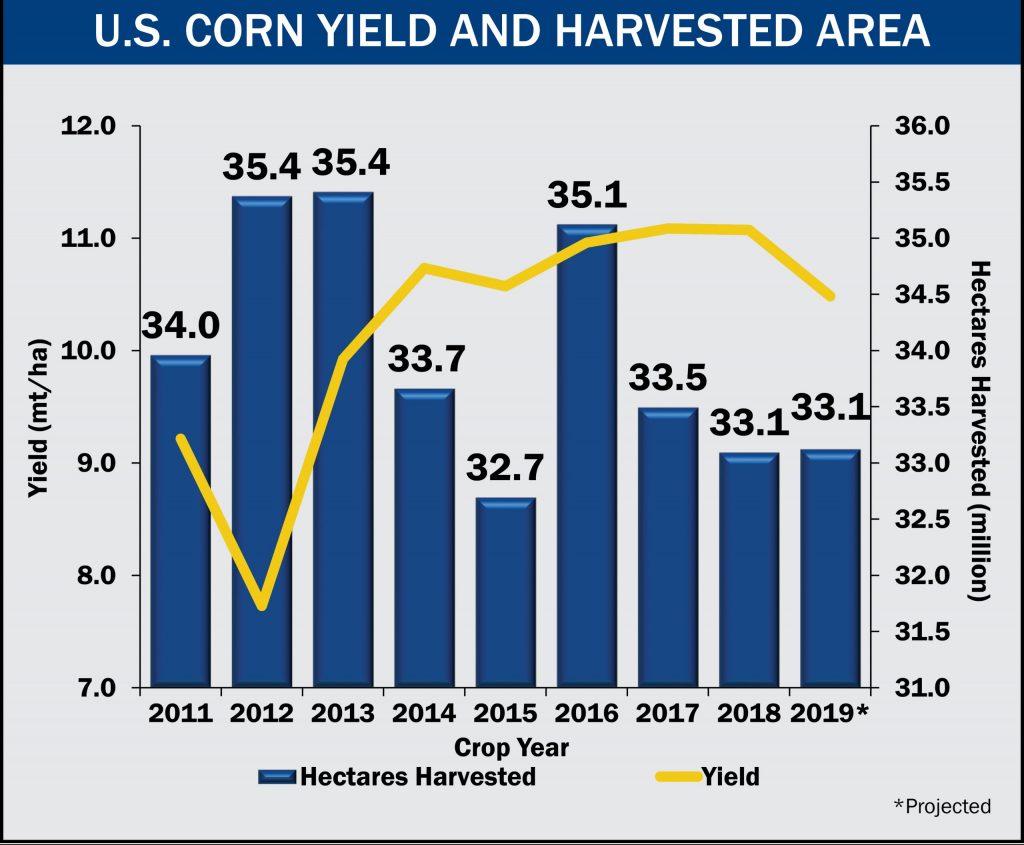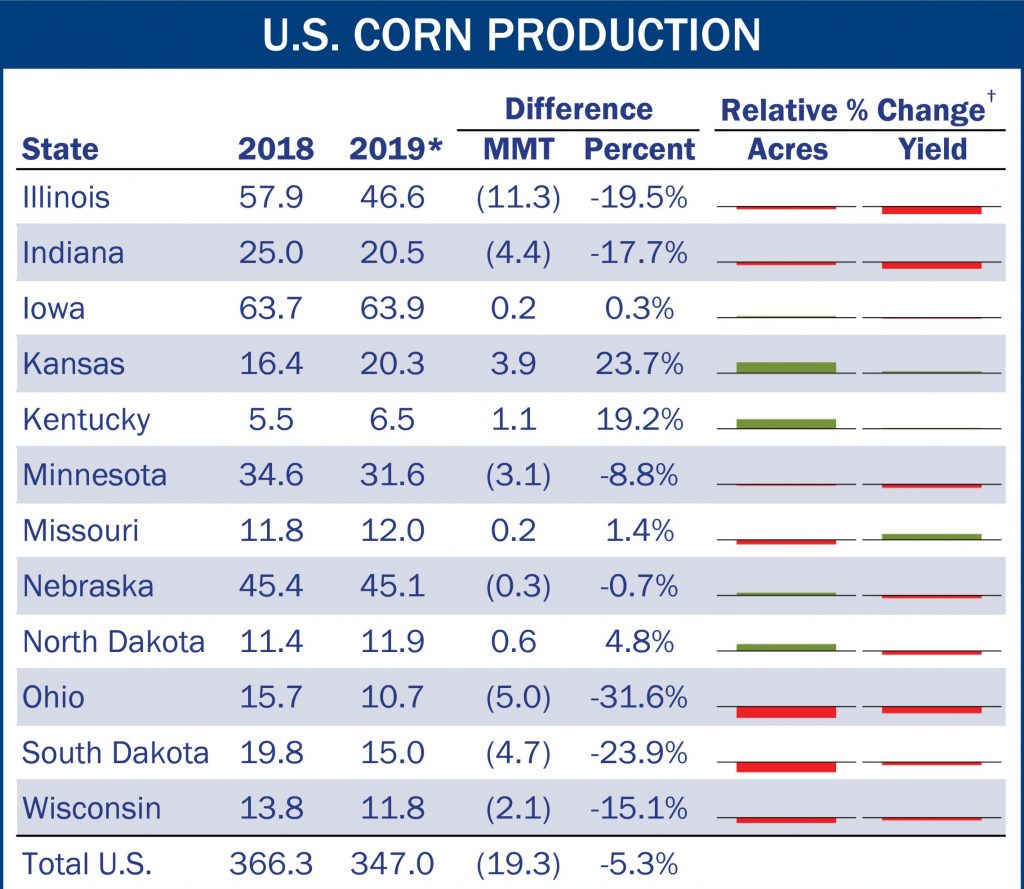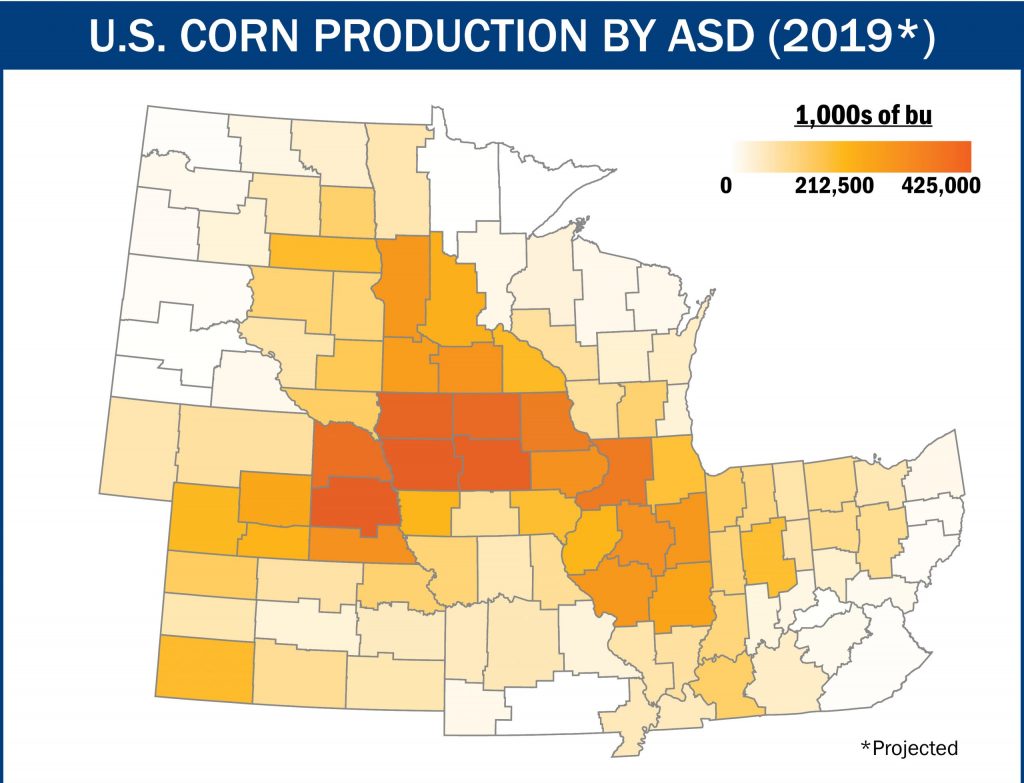U.S. Corn Production, Usage & Outlook
U.S. Average Production and Yields
According to the December 2019 USDA World Agricultural Supply and Demand Estimates (WASDE) report, U.S. corn production in 2019 is projected to be 347.01 million metric tons (13,661 million bushels). If realized, this year’s crop would be the smallest since the 2015 crop produced 345.51 million metric tons (13,602 million bushels). While the projected size of the 2019 crop is smaller compared to recent years, it is important to note that the previous three U.S. corn crops were the three largest and highest yielding in U.S. history. From a historical perspective, the 2019 crop is still projected to be the sixth-largest U.S. crop on record despite the challenges associated with its historically late planting.
Average U.S. corn yield and harvested hectares are both projected to be lower than the average of the previous five crops. Average projected corn yield in 2019 is projected to be 10.48 metric tons per hectare (167.0 bushels per acre) compared to the 5YA of 10.89 metric tons per hectare (173.4 bushels per acre). In terms of harvested hectares, the projected 33.12 million (81.8 million acres) harvested is also slightly less than the 5YA of 33.61 million hectares (83.0 million acres).
ASD and State-Level Production
The geographic areas included in the 2019/2020 Corn Harvest Quality Report encompass the highest corn-producing regions of the United States. The map shows the projected 2019 corn production by USDA Agricultural Statistical District (ASD). These states represent over 90.0% of U.S. corn exports.
The U.S. Corn Production by State chart and table summarize the changes in production between each state’s 2018 and projected 2019 corn crops. The table also includes an indication of the relative changes in harvested acres and yield. A green bar indicates a relative increase, and a red bar indicates a relative decrease from 2018 to projected 2019. Eight of the 12 key corn-producing states expect large changes (greater than 10.0%) in production relative to their 2018 crops.
While not the only factor influencing production, the delayed planting of the 2019 crop contributed to year-over-year production declines projected to be more than 15.0% in five of the 12 key corn-producing states; including Illinois, Indiana, Ohio, South Dakota, and Wisconsin. Minnesota, the fourth largest corn-producing state, is also projected to have an 8.8% decrease in production relative to its 2018 crop. On the other hand, Kansas and Kentucky are projected to have increases in production of 23.7% and 19.2%, respectively, compared to their 2018 crops, largely due to increases in harvested acres. North Dakota, Missouri, Nebraska, and Iowa are the only four states projected to have production changes of less than 5.0% compared to their 2018 crops.
